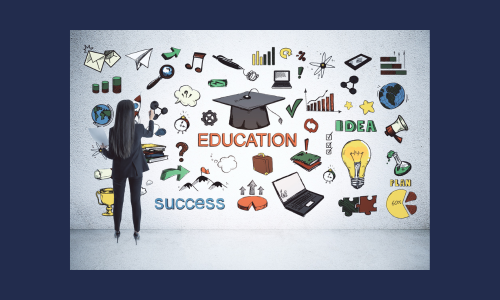Education as a Fundamental Right: Achievements and Challenges
Right to Education Act (RTE) provided free and compulsory education to children in 2009 and enforced it as a fundamental right under Article 21-A.[1]
Introduction
Education plays a vital role in shaping the character, skills, and future of individuals as well as the nation. It is not merely about literacy but about empowerment, awareness, and inclusive growth. In India, the recognition of education as a fundamental right marked a historic transformation in the understanding of development and democracy. The inclusion of Article 21-A in the Constitution in 2002, making education a fundamental right, and the subsequent enactment of the Right to Education (RTE) Act, 2009, are seen as major milestones in the effort to provide equal educational opportunities for all children.[2]
The right to education under Article 21-A ensures free and compulsory education for children between the ages of six and fourteen. This provision recognizes education as essential for the full development of human potential and for safeguarding other constitutional rights. It stems from the principle that law aims to remove barriers based on poverty, caste, gender, and background, making education a justiciable right that can be enforced through courts.[3]
Achievements
Over the years, India has achieved considerable progress in extending educational access. School enrollment rates have improved substantially, especially among girls and children from Scheduled Castes, Scheduled Tribes, and other marginalized groups. The government’s initiatives such as Sarva Shiksha Abhiyan, Mid-Day Meal Scheme, and Beti Bachao Beti Padhao have encouraged school attendance and reduced dropout rates. More schools have been built in rural and remote areas, bringing education closer to children who earlier had little or no access to learning.[4]
Landmark Judicial Support
Judicial rulings have also shaped the evolution of the right to education. In cases such as Mohini Jain v. State of Karnataka (1992) and Unni Krishnan v. State of Andhra Pradesh (1993), the Supreme Court confirmed that the right to education is integral to the right to life under Article 21, establishing it as fundamental. These interpretations led to the legislative push for Article 21A and the RTE Act, cementing the right’s enforceability and reach.
Challenges
In spite of recent advancements, ensuring quality education for everyone remains a tough goal in India. Many government schools still do not have enough classrooms, reliable textbooks, proper sanitation, or clean drinking water, making it hard for students to learn comfortably. The shortage of teachers, along with limited training opportunities, leads to overcrowded classrooms and uneven learning outcomes.
Economic hardship is another major barrier – issues like poverty, child labor, and societal expectations prompt many students, especially those living in villages or from vulnerable backgrounds, to leave school early. Admission policies have become more inclusive, but there is still a distinct gap between rural and urban schools, as well as between government and private institutions. These disparities result in unequal opportunities and access to resources, which deepens educational inequality.
Besides, policies like the Right to Education Act face difficulties in consistent execution; some states implement these laws better than others, while delays and bureaucratic challenges slow down progress. Ultimately, bridging these gaps requires better funding, improved teacher support, and focused efforts to reduce inequality in India’s school system.[5]
Conclusion
Education as a fundamental right represents a significant legal and social achievement for India, paving the way for inclusive development and justice. Yet, the full realization of this right demands ongoing efforts to elevate educational quality, strengthen infrastructure, train teachers, and bridge social and digital divides. Only by addressing these challenges consistently and creatively can India ensure that every child truly benefits from the promise of free and equitable education, thereby securing a stronger and more equal future for all.[6]
[1] https://www.right-to-education.org/page/understanding-education-right
[2] https://www.drishtijudiciary.com/to-the-point/ttp-constitution-of-india/right-to-education-under-article-21a
[3] https://ijcrt.org/papers/IJCRT1812190.pdf
[4] https://docs.manupatra.in/newsline/articles/Upload/14E6D700-6AAB-4675-B644-69AEB5F6F02D.pdf
[5] https://www.socialstudiesjournal.com/archives/2024/vol6issue2/PartA/6-2-17-695.pdf
[6] https://brokenchalk.org/the-right-to-education-act-in-india-success-and-challenges-in-implementation/

